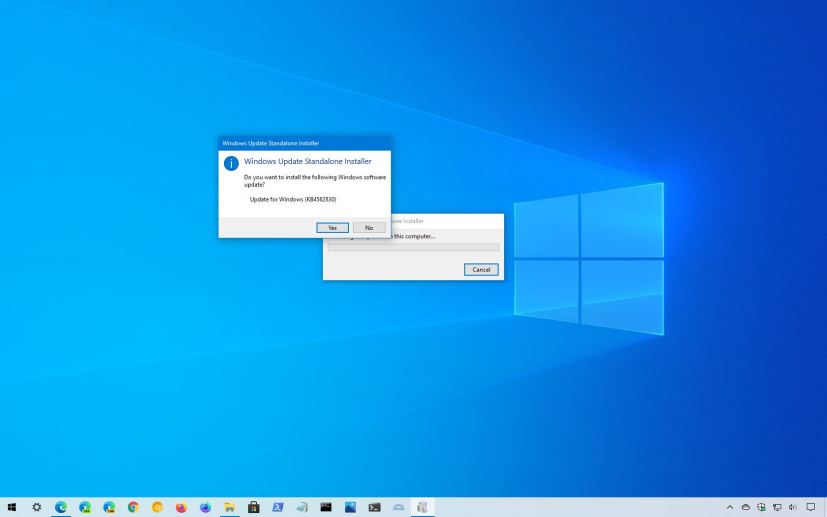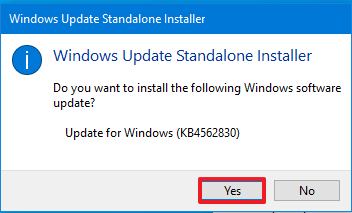
The October 2020 Update for Windows 10 (version 20H2) is now slowly rolling out to compatible devices, and while the recommended way to install the feature update is using the Windows Update service, you can also download and install the enablement package (KB4562830) manually using the standalone installer.
This option is only available for devices running version 2004. If you’re using version 1909 or an older release, you can’t use the enablement package to upgrade. The reason is that Windows 10 version 2004 and 20H2 have a common core system with the same system files. As a result the new set of features have already been deployed in a dormant state to computers running version 2004 using quality updates throughout the year. These new features will remain inactive until the KB4562830 update is installed, which is what Microsoft is rolling out to users starting October 20.
Using this approach significantly reduces the time to upgrade from version 2004 to version 20H2, and lowers the restart times to only one.
In this guide, you’ll learn the steps to download and install the enablement package manually to upgrade your device to Windows 10 20H2.
Install Windows 10 20H2 enablement package on version 2004
While it’s a good idea to wait until the device receives the update automatically, this option will come in handy in many scenarios. For instance, if it’s been sometime and your computer is not getting the feature update through Windows Update and you’re sure that your hardware configuration is compatible. You want to test the update on a spare computer before upgrading your primary device, or you can’t wait until the new version arrives automatically.
Requirements
According to the Microsoft support website, the device must have the quality updates released on September 8 and October 13 or later releases before you can apply the enablement package.
You can make sure your computer has the latest updates on Settings > Update & Security > Windows Update, and clicking the Check for updates button.
Download version 20H2 enablement package
To download the enablement package to upgrade your device from version 2004 to version 20H2 use the following links (via Reddit):
Install version 20H2 enablement package
To apply the October 2020 update enablement package, use these steps:
-
Open File Explorer.
-
Browse to the .msu (windows10.0-kb4562830-x64 or windows10.0-kb4562830-x86) file location.
-
Double-click the standalone installer.
-
Click the Yes button.

Windows 10KB4562830 install -
Click the Restart now button.
After you complete the steps, the device will switch the version to the October 2020 Update, and then you can start using the new features and improvements. (See also How to check if Windows 10 20H2 is installed on your PC.)
If you prefer to watch the steps, you check this video tutorial outlining the instructions to apply the enablement package on your computer. If you come across issues or bugs, you can always uninstall the update to rollback to the previous version using these steps.
In the case that you’re running version 1909 or an earlier version, you can still upgrade, but you’ll need to use other tools like the Media Creation Tool or Update Assistant. Or you can wait until the new version becomes available through Windows Update automatically.
